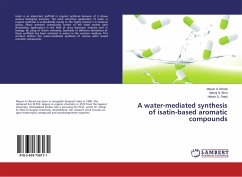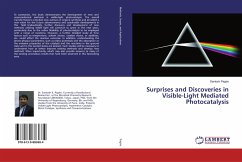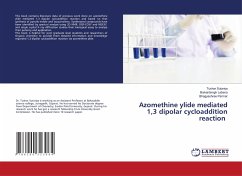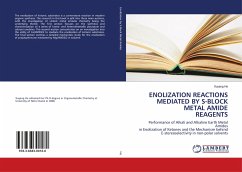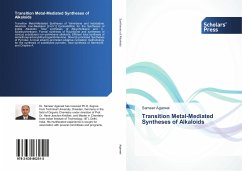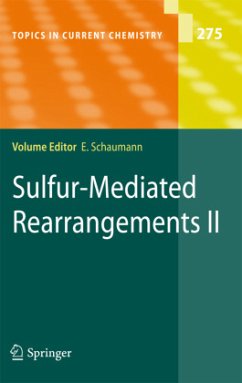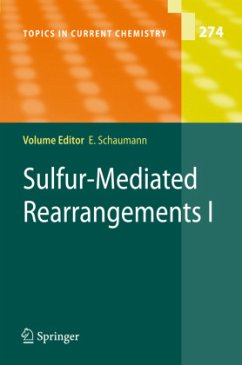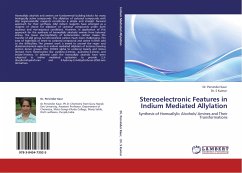
Stereoelectronic Features in Indium Mediated Allylation
Synthesis of Homoallylic Alcohols/ Amines and Their Transformations
Versandkostenfrei!
Versandfertig in 6-10 Tagen
45,99 €
inkl. MwSt.

PAYBACK Punkte
23 °P sammeln!
Homoallylic alcohols and amines are fundamental building blocks for many biologically active compounds. The allylation of carbonyl compounds with allyl organometallic reagents constitutes a simple and straight forward approach for their synthesis. Allyl indium reagents have emerged as a reagent of choice for allylation of carbonyl compounds under both aqueous and non-aqueous conditions. However, in application of this approach for the synthesis of homoallylic alcohols/ amines from ketones/ imines, the lower electrophilicity of ketone/imine carbon makes the transfer of allyl group to ketone/imi...
Homoallylic alcohols and amines are fundamental building blocks for many biologically active compounds. The allylation of carbonyl compounds with allyl organometallic reagents constitutes a simple and straight forward approach for their synthesis. Allyl indium reagents have emerged as a reagent of choice for allylation of carbonyl compounds under both aqueous and non-aqueous conditions. However, in application of this approach for the synthesis of homoallylic alcohols/ amines from ketones/ imines, the lower electrophilicity of ketone/imine carbon makes the transfer of allyl group to ketone/imine carbon much more challenging. The ease of hydrolysis of imine to carbonyl compound and amine further add to the difficulties. The present work is aimed to unravel the regio- and diastereochemical aspects in indium mediated allylation of ketones bearing proton donor groups (OH, COOH) alpha to carbonyl moiety and imines derived from heterocycles like pyridine-2-imines, quinoline-2-imines and indole-3-imines. In selected cases the homoallylic alcohols have been subjected to iodine mediated cyclization to provide 2,3-diaryltetrahydrofuran and 3-hydroxy-3,4-dihydrofuran-2(5H)-one derivatives.



